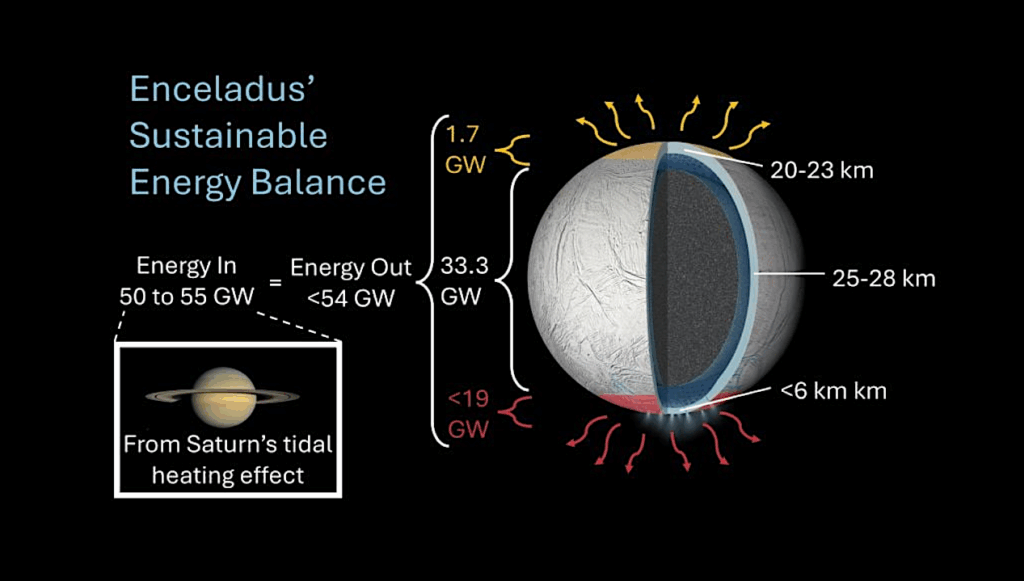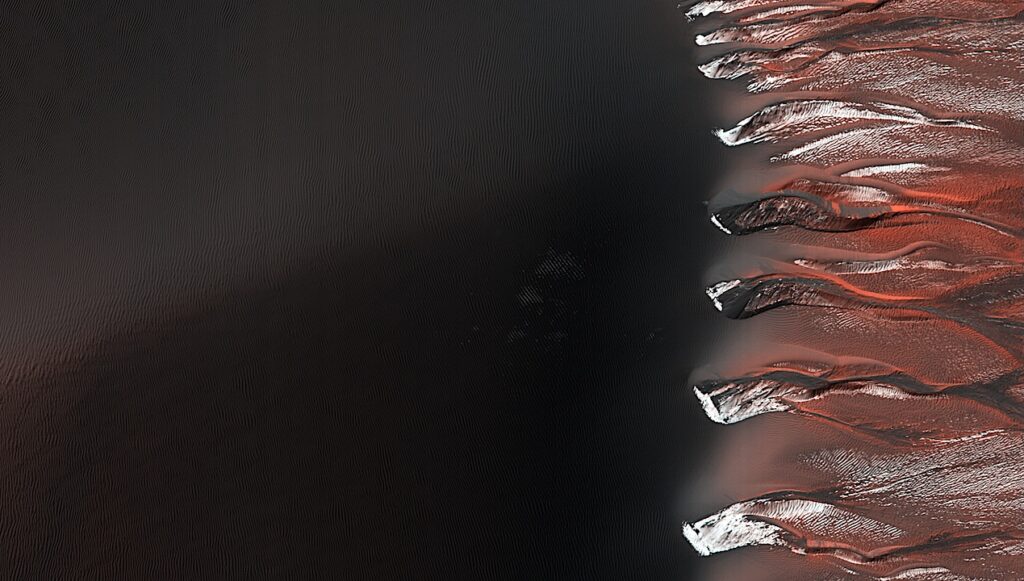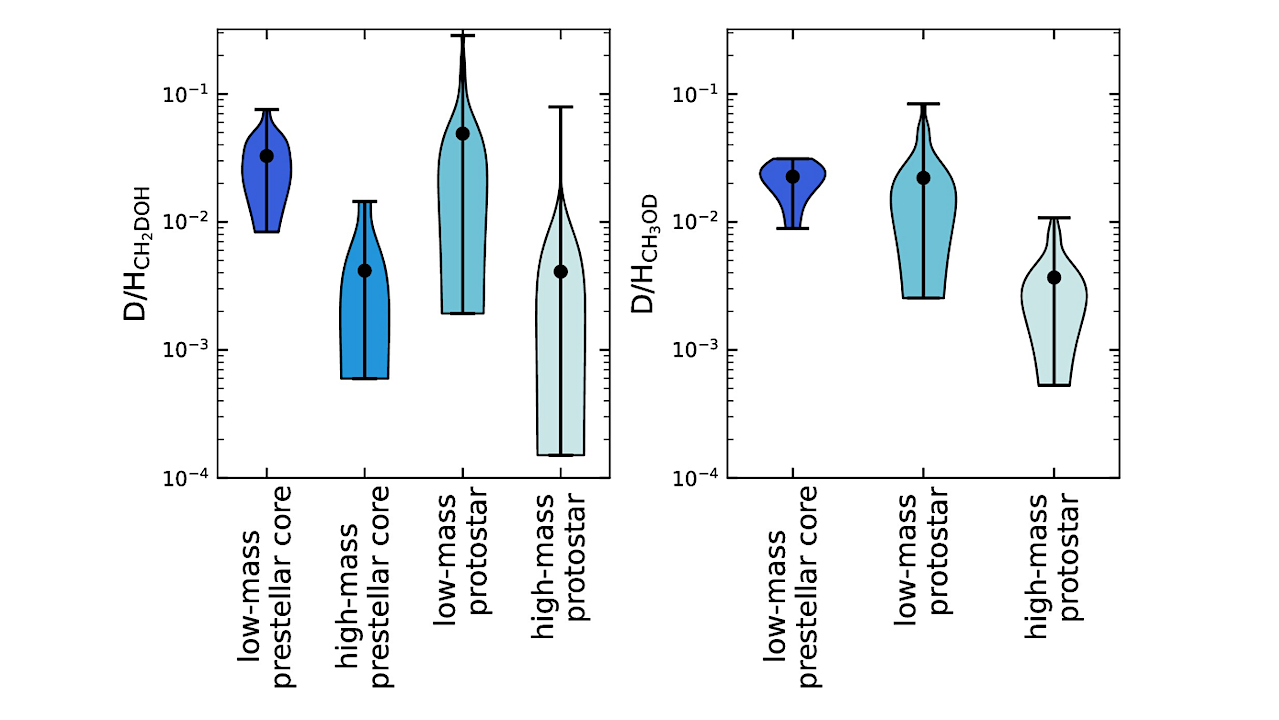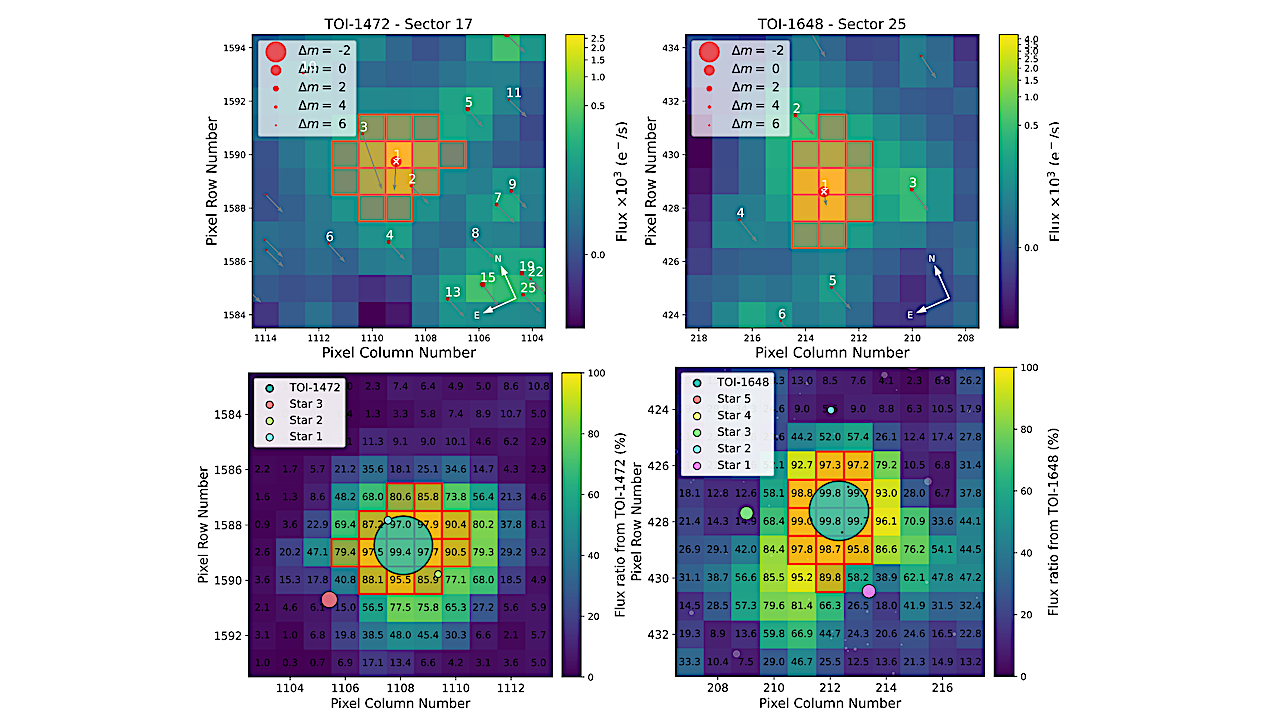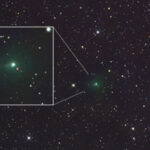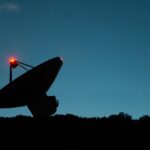Now Reading: Detectability of Atmospheric Climate and Biosignatures with the Large Interferometer for Exoplanets (LIFE) for Terrestrial-type Exoplanets
-
01
Detectability of Atmospheric Climate and Biosignatures with the Large Interferometer for Exoplanets (LIFE) for Terrestrial-type Exoplanets
Detectability of Atmospheric Climate and Biosignatures with the Large Interferometer for Exoplanets (LIFE) for Terrestrial-type Exoplanets
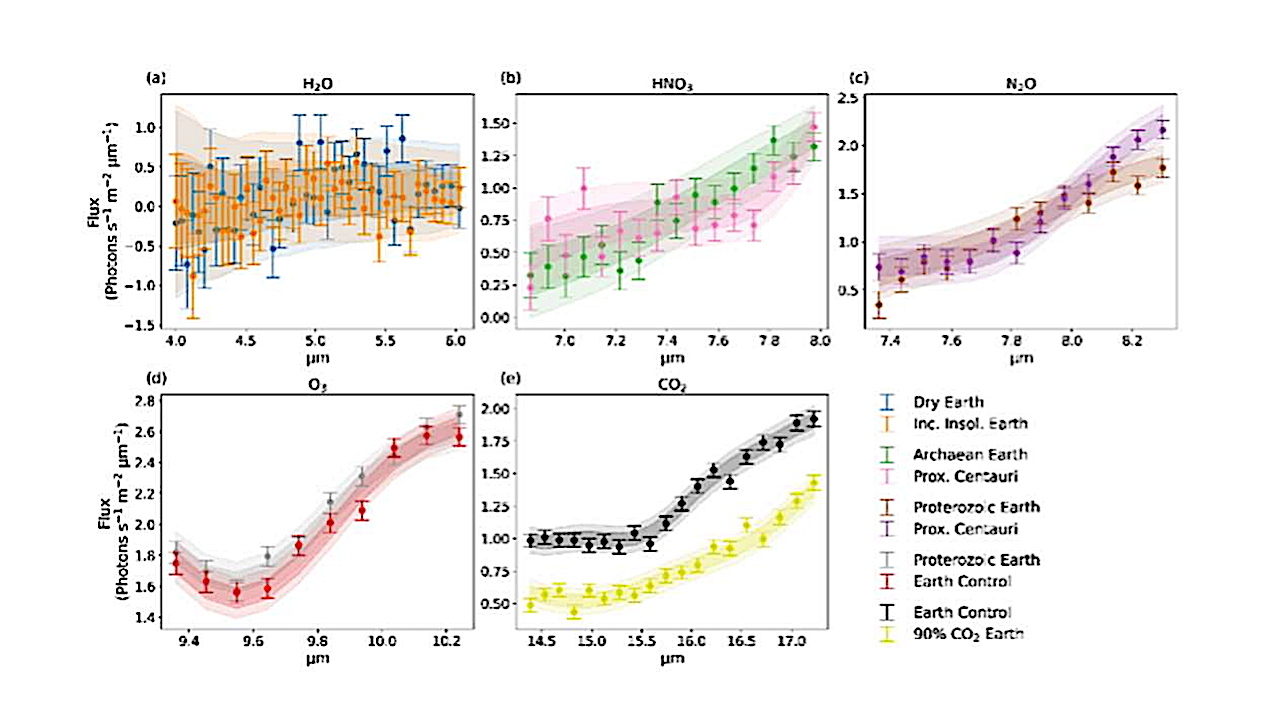

Matrix plot summarizing the main differences between the 22 model scenarios. The x and y-axes show the scenario numbers. Values in the blue-shaded boxes show the absolute mean difference () of the spectral radiance (W m-2 sr-1 micron-1) taken from the calculated emission spectra (Figure 8). Darker blue shading corresponds to larger values. The upper right triangle (above the central diagonal, denoted by empty white boxes) shows values for the CO2 fundamental absorption band at 15 microns. The lower left triangle shows the same but for the O3 fundamental absorption band at 9.6 microns. Colored boxes (red, yellow, green, orange) represent large emission differences (deeper blue shading) — MNRAS
We investigate the detectability of atmospheric biosignatures with the LIFE mission.
Starting with the modern Earth we model the climate, photochemistry and spectra of Earth-like planets over a range of insolation, gravity, humidity, albedo, atmospheric mass and carbon dioxide abundances and investigate detectability of key atmospheric species by LIFE for Earth-like planets assumed to lie at 10pc for the LIFE (20-day viewing) baseline case. We find that atmospheric ozone (O3) abundances are maintained over a range of conditions. The O3 fundamental band is visible for most scenarios studied but is weakened for exoplanets with cooler central stars.
Additional potential biosignatures such as methane (CH4), nitrous oxide (N2O) and chloromethane (CH3Cl) are favored for low UV conditions e.g. exoplanets orbiting cooler central stars or having strong atmospheric shielding. Regarding spectral signatures, CH4 and water (H2O) signals from 6-8 μm are evident in most scenarios, as is the carbon dioxide (CO2) 15 μm band, which strengthens for low-O2 scenarios associated with upper atmosphere cooling.
Considering the LIFE baseline case with 20-day viewing, H2O is retrievable with a confidence level (CL) of up to 3σ for the high (90%, 0.9 vmr) CO2 scenario, and with ∼2σ or less for the other scenarios. N2O is not be observable with a CL sigma mostly in the range 1-2. CH4 features a CL sigma detectability range of 2.3-4.4. O3 is detectable with a CL (>3σ) in most scenarios (including the low-ozone Proterozoic) except for the extremely low O3 Archaean scenario and the low pressure atmosphere scenario.
Detectability of Atmospheric Climate and Biosignatures with the Large Interferometer for Exoplanets (LIFE) for terrestrial-type Exoplanets, Monthly Notices of the Royal Astronomical Society (open access)
Astrobiology, Astrochemistry, Exoplanet,
Stay Informed With the Latest & Most Important News
Previous Post
Next Post
-
 012024 in Review: Highlights from NASA in Silicon Valley
012024 in Review: Highlights from NASA in Silicon Valley -
 02Panasonic Leica Summilux DG 15mm f/1.7 ASPH review
02Panasonic Leica Summilux DG 15mm f/1.7 ASPH review -
 03How New NASA, India Earth Satellite NISAR Will See Earth
03How New NASA, India Earth Satellite NISAR Will See Earth -
 04And Thus Begins A New Year For Life On Earth
04And Thus Begins A New Year For Life On Earth -
 05Astronomy Activation Ambassadors: A New Era
05Astronomy Activation Ambassadors: A New Era -
06SpaceX launch surge helps set new global launch record in 2024
-
 07Space Force plans new ‘Futures Command’ amid pressure to speed up modernization
07Space Force plans new ‘Futures Command’ amid pressure to speed up modernization














